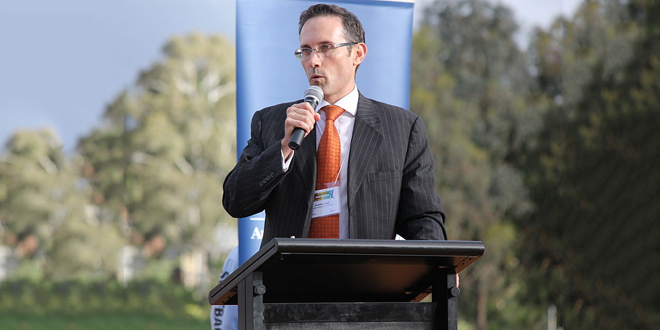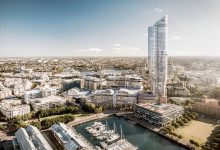Fears new law will expose sky-high cladding costs
Building owners who don’t know whether the cladding on their building is combustible (or to use the less scary word, non-conforming) are soon going to be forced to find out.
The issue over what cladding has been used on buildings crystallised after the Grenfell Tower fire in the UK in 2017. Australia’s equivalent, without the horrific loss of life in Grenfell, was the Lacrosse Tower fire in Melbourne in 2014.
Since then the wheels of respective state governments have turned very slowly. Victoria has their cladding task force and has now come up with a rectification solution that will allow lot owners in bodies corporate to pay back the cost of addressing the defective cladding through their rates.
Other states have equivalent bodies but no solutions yet.
The Queensland approach has been to create the Non-Conforming Building Products Audit Taskforce, which led to the government addressing concerns with all of their own buildings.
Now it is the turn of the public at large.
The new regulation is the Building and Other Legislation (Cladding) Amendment Regulation 2018, and what it means for bodies corporate when it commences on 1 October 2018 is this:
The compliance zone
If a building:
- is any of classes 2 to 9 (which covers basically everything residential and commercial other than houses); and
- had a building development approval issued after 1 January 1994 but before 1 October 2018 to build the building or alter the cladding; and
- is of Type A or Type B construction (essentially buildings of three storeys or higher)
then the building is caught by the new regulation.
Stage 1 – Registration
If a building is in the compliance zone, owners need to register and complete an online checklist via the QBCC that determines whether the building is likely to be one of those with non-conforming cladding. Every building will have until 29 March 2019 to complete this.
If the checklist is not completed, there is a maximum fine of 20 penalty units ($2,611).
If there is no issue, then all is well. Owners just need to keep that certification. If not, it is onto stage two.
Stage 2 – Building industry professional
If a building is one that may have non-conforming cladding, owners have until 29 May 2019 to go back to the QBCC with a statement from a building industry professional about whether the cladding on the building is non-conforming.
If the cladding on a building is non-conforming, owners can skip the completion of the report, notify the QBCC they have non-conforming cladding and go to straight to stage three.
There is only two months between the last date to register and the date which this first assessment is required. It will not pay to be tardy in getting started, as there are fines for missing the deadlines.
The maximum fine for missing this date is the same as that for missing stage one.
Stage three – Fire risk assessment
If a building has non-conforming cladding then a qualified fire engineer must complete a fire risk assessment about the safety of the building. That assessment will determine whether the scheme as it is will essentially remain safe or whether rectification works are necessary.
Every building must give the name of its fire engineer to the QBCC by 27 August 2019 and have the final report to the QBCC by 3 May 2021. That is less than three years away.
If a fire engineer has not been nominated or completed the risk assessment by the required dates, the fines gear up to a maximum of 50 and 165 penalty units respectively ($6,527.50 and $21,540.75).
After assessment
If the building has non-conforming cladding then:
- a notice to that effect must be displayed in a conspicuous part of the building for so long as the cladding remains in place; and
- every lot owner and tenant must be given a copy of the notice – including new tenants and new owners.
Ignorance of the need to comply
Everyone will be out there trying to make bodies corporate aware of their obligations. But some will simply ignore them. Some strata managers may also simply ignore them. It is ultimately the role of the committee to get this done, but no doubt fingers will be pointed at strata managers if it isn’t.
Strata managers need to be vigilant to make sure they have covered their backsides by addressing this with every body corporate they manage.
It may not be pretty when the government starts rounding up those buildings that have not participated in stage one by the required date.
It would also seem that there will need to be some form of evidence (termed ‘a proof of agency’) produced to the QBCC about the ability of anyone to complete the document on behalf of the body corporate. What that looks like is also yet to be determined.
Stage two timing
There is only two months from the last date for registration to the time to return the building industry professional report.
If bodies corporate leave it to the last minute we suspect there won’t be enough experts to go around.
Get started and get started early, because when you allow for the Australian holiday season (Melbourne Cup Day through to Australia Day) there is also another three months that disappears very quickly during that registration period.
Fire risk assessment notifications
If a building has non-conforming cladding, notifying new owners is easy. They appear on the roll, and (hopefully) the strata manager’s software programs then deal with the notification.
Tenants will be a lot harder. For those with onsite management or professional property managers it may be okay as they should have systems that will deal with it. Communicating what needs to be done with property managers will be important.
For people who self-manage or use a property manager who does not know what they are doing, the reality is tenants may not be told.
Our immediate interpretation is that holiday / corporate tenants probably do not need to be told (as they might not be ‘leasehold interest holders’), but time will tell.
The bigger issues
The uncertainty.
These are all guesses, but try these for flow-on effects:
- the fact that non-conforming cladding may be present is going to be a potential disincentive to prospective property buyers while it is not known, and a probable genuine turn-off to them once it is certain.
- what will banks do with their lending policies for potentially affected, or known to be affected, buildings?
- strata insurers will now have to price the (soon to be) known risks for building insurance.
It wouldn’t surprise us if there was some change to the disclosure regime to specifically address this issue. After all, the disclosure form at the moment includes who the body corporate secretary is. Whether the building has non-conforming cladding is probably a tad more important.
Rectification costs
The Lacrosse Tower owners are still fighting about who wears what cost five years after their fire. The statutory position is that if rectification is required, then the body corporate must do it. It may well have a right to recover those costs from parties involved in the construction process, but that right is independent of the immediate obligation to sort out the issue. We will leave limitation periods aside for the moment too.
This means owners are going to have to pay special levies, or bodies corporate borrow money, to bring their building back to having conforming cladding.
Bodies corporate will not be allowed to delay that while they try to recover the costs from a third party.
The statutory obligation to disclose defects
This is the biggest issue we see for property sellers.
Just because cladding is non-conforming might not mean it needs to be removed. The other fire safety mechanisms may cover any risk appropriately. Having said that, the non-conforming cladding could still very well be considered a defect in common property (although we are still debating that internally). There are arguments for and against this, but if it is not a defect, why is there the need for the conspicuous sign in the building about it?
Section 223 of the Body Corporate and Community Management Act 1997 imposes an obligation on sellers to disclose to buyers latent or patent defects in common property that the seller is aware of or ‘ought’ to be aware of.
Sellers ‘ought’ to be aware of issues identified in the body corporate minutes. Committee members who are actively involved in the decision making process around this have nowhere to hide under any definition.
If buildings have non-conforming cladding, which is not disclosed in the sale contract by a seller, and there are subsequent rectification works required along with the special levies or borrowings, we can see a raft of litigation about the lack of that disclosure against sellers, sales agents and those who prepared contracts for sale (such as lawyers).
We like providing solutions, but with this one there is a long way to go before the air clears.
Frank Higginson is a partner at Hynes Legal and specialises in body corporate law and management rights.






